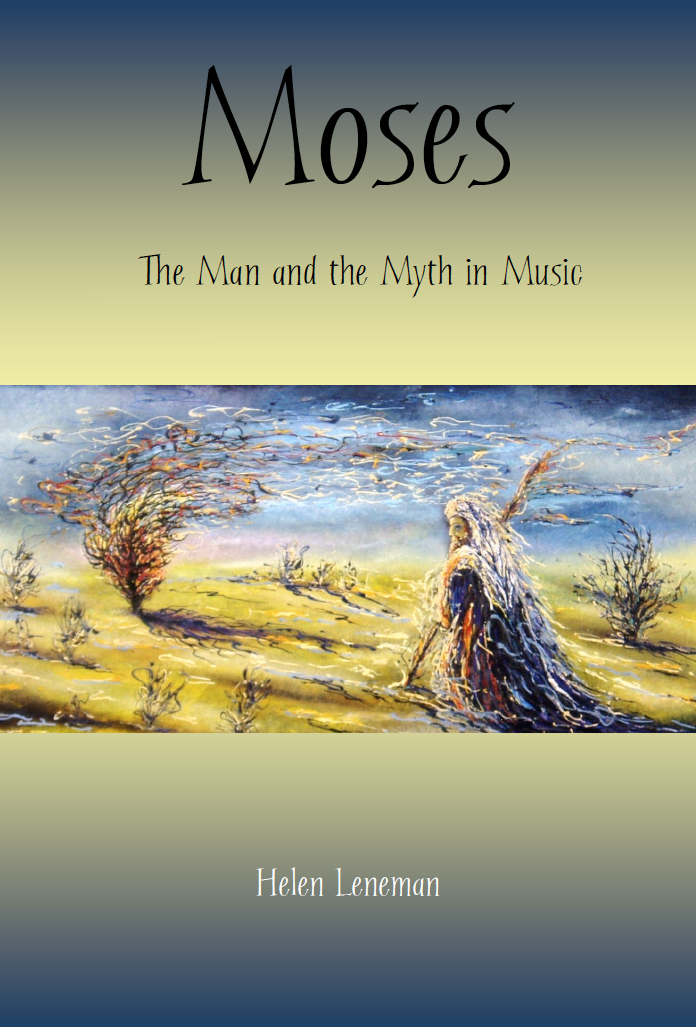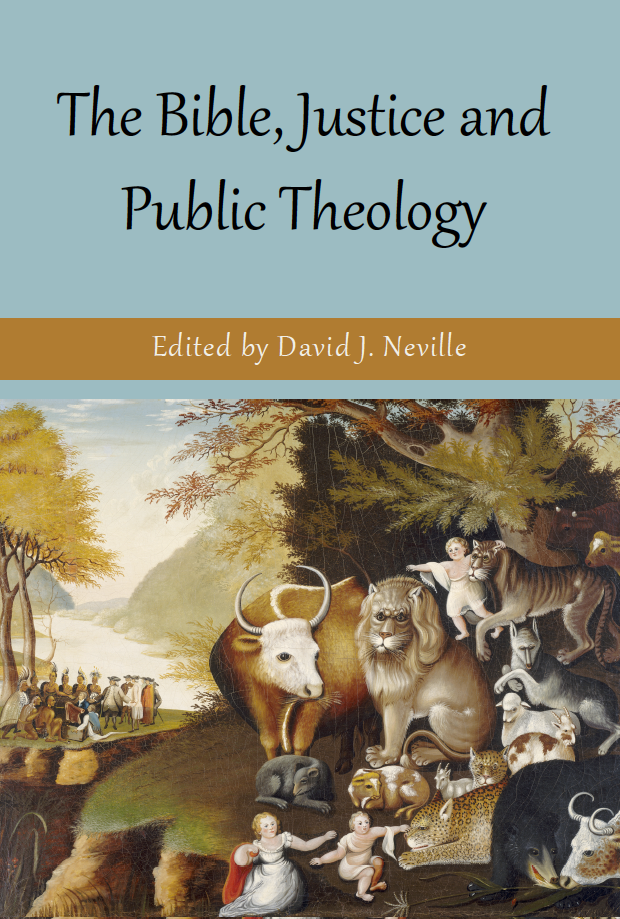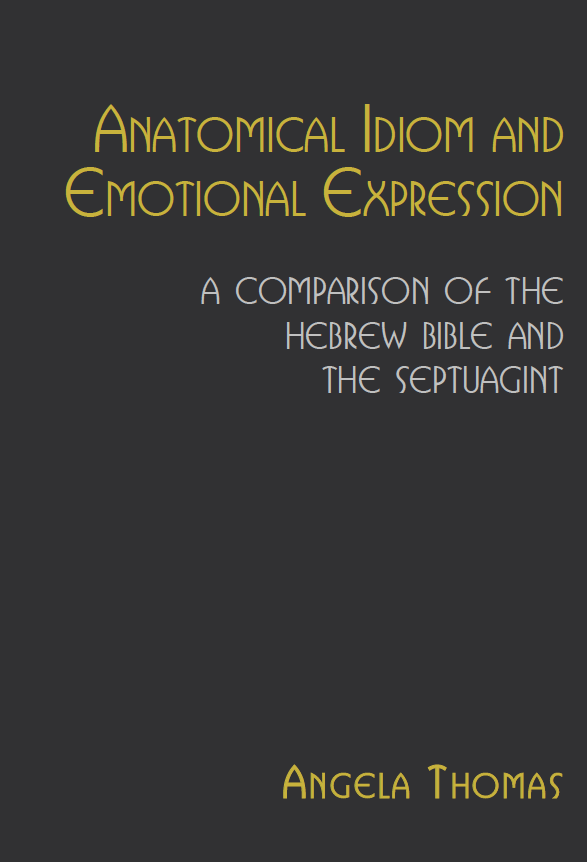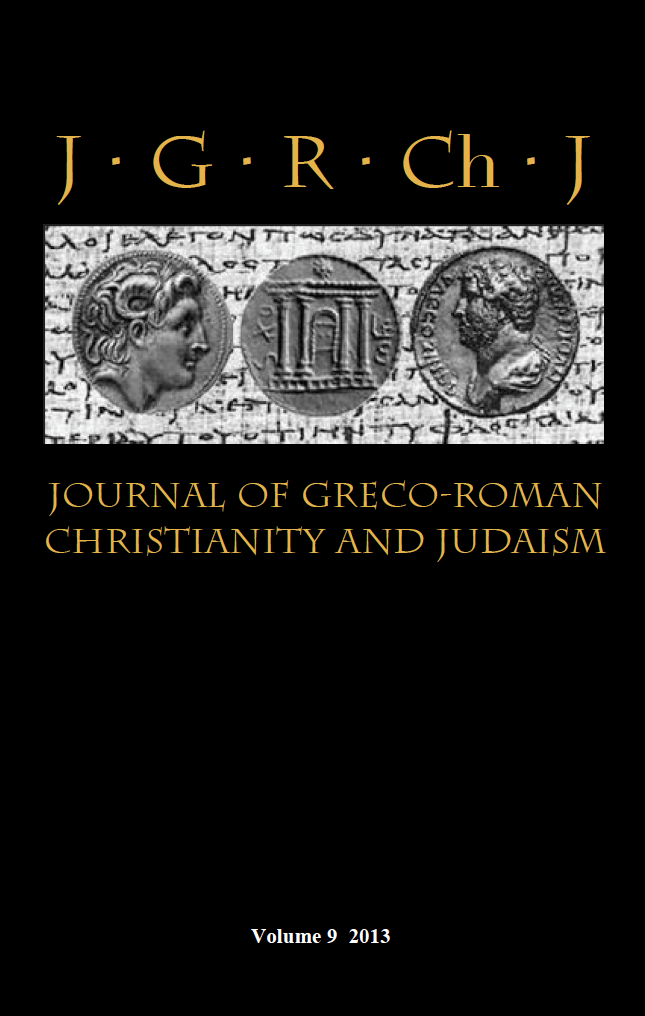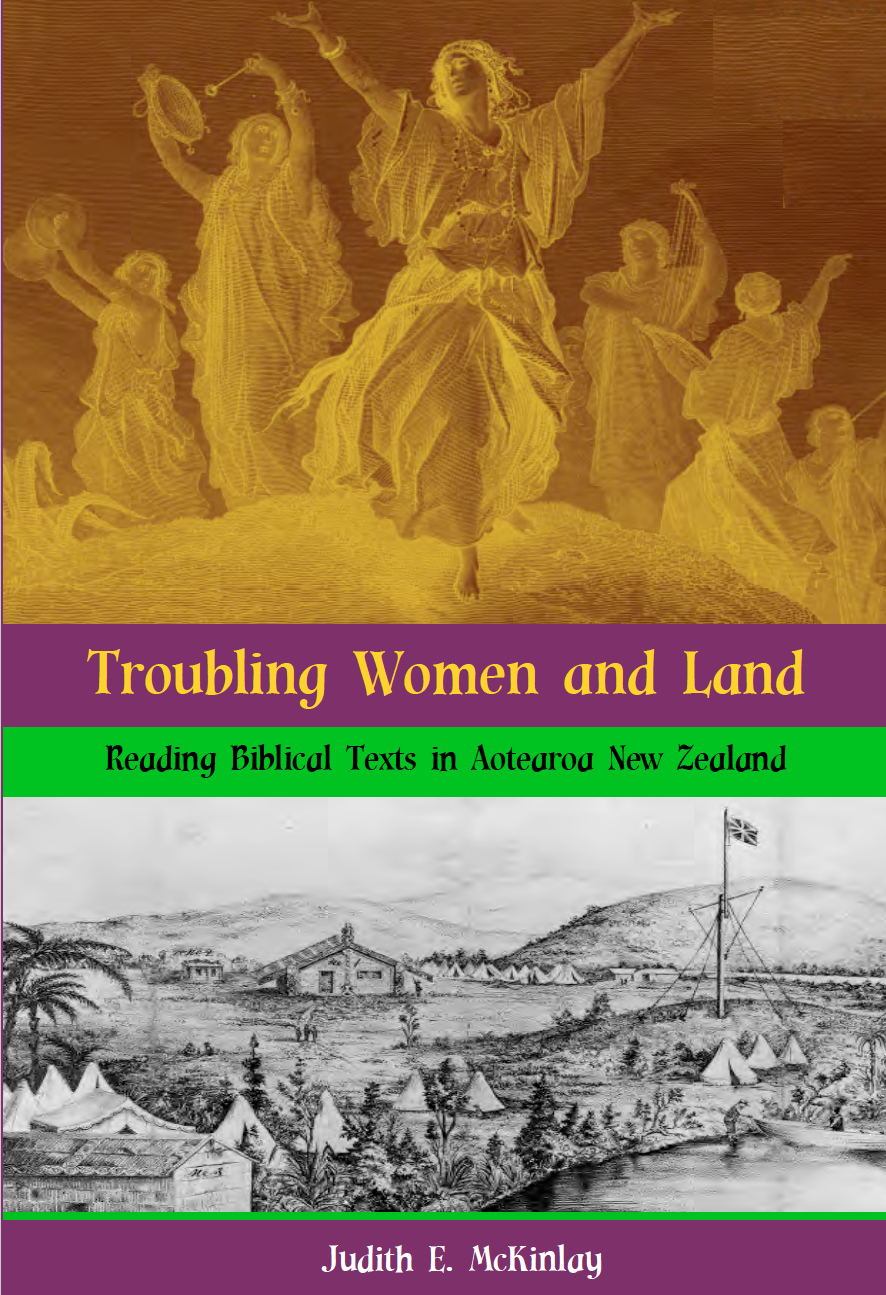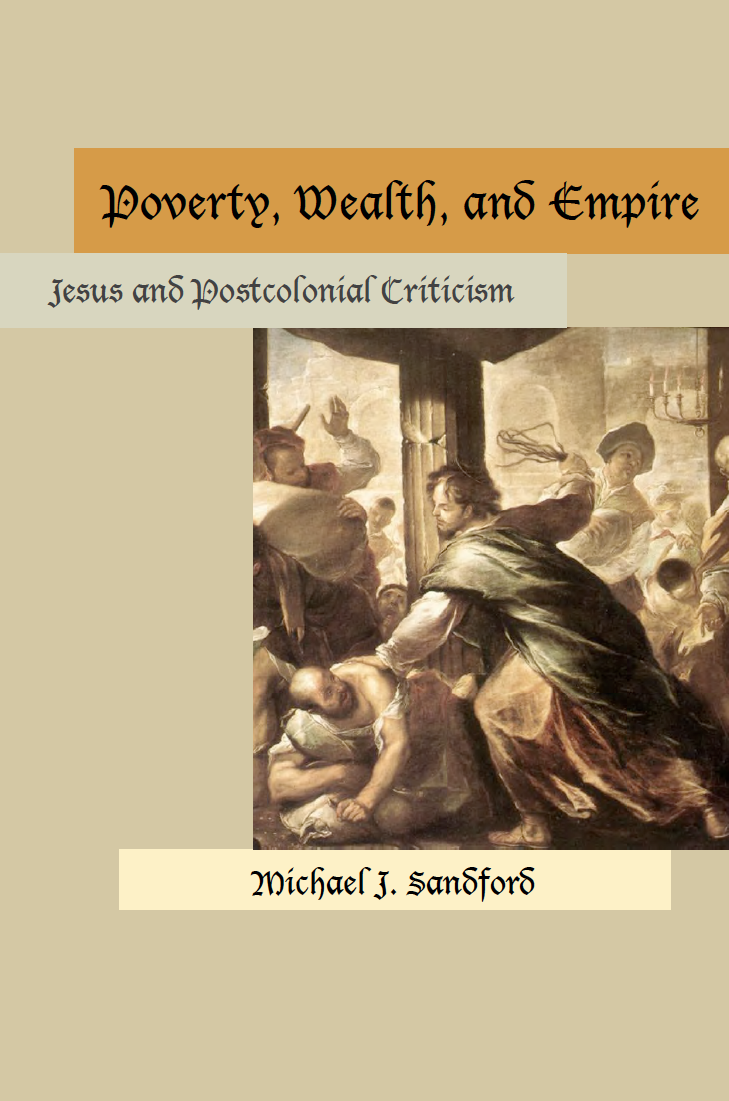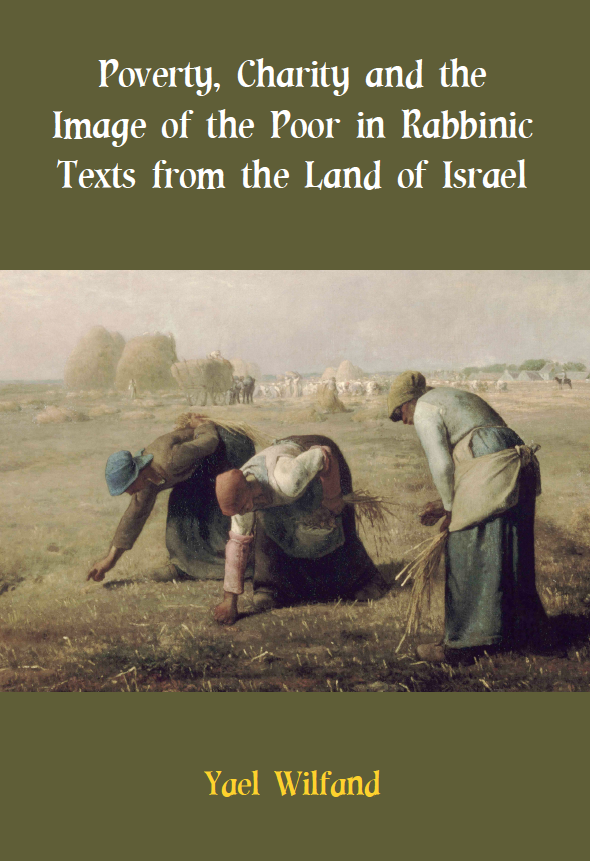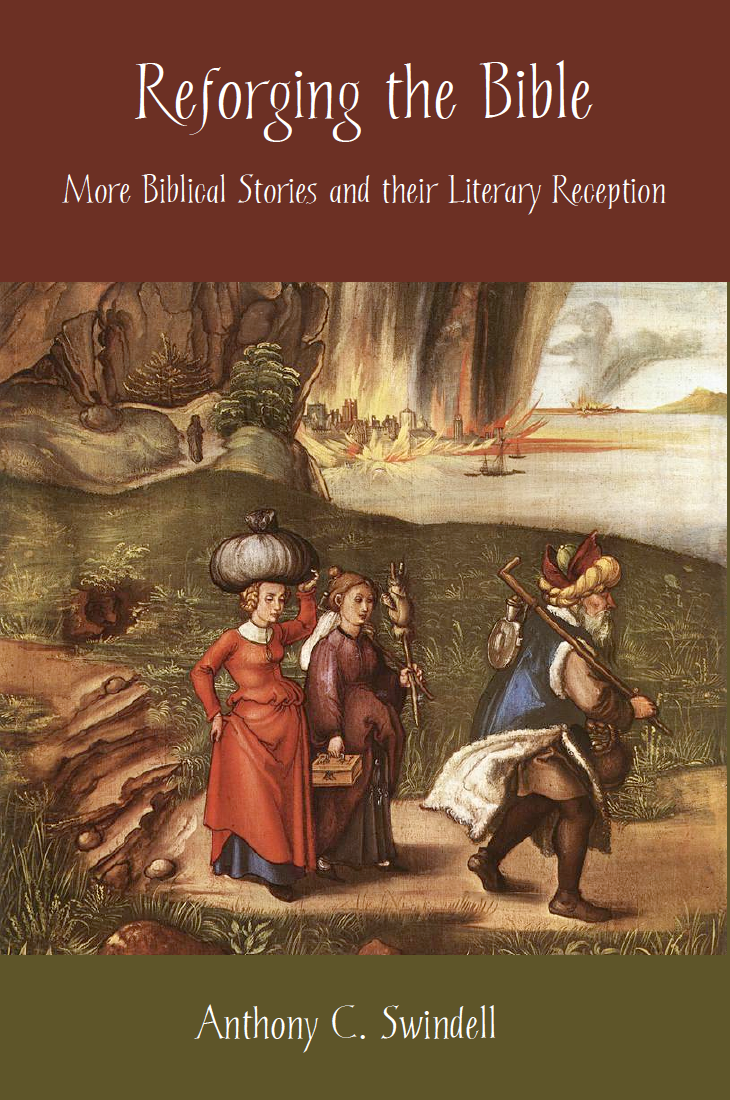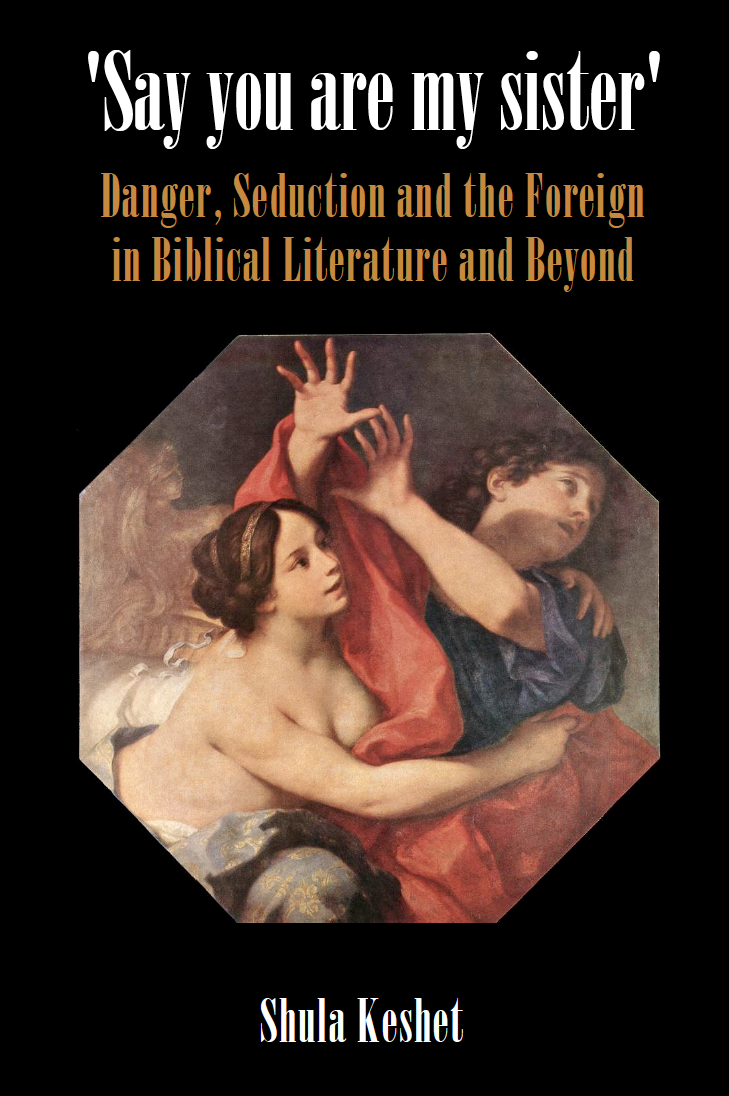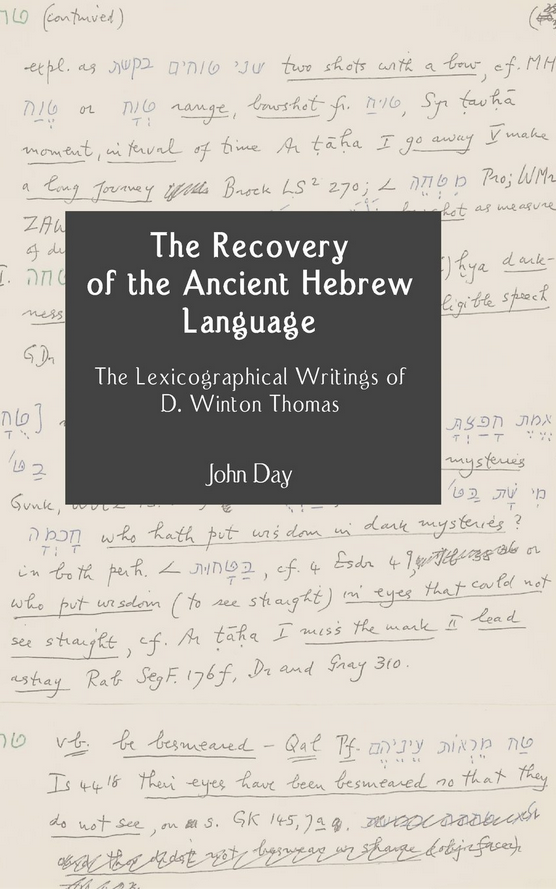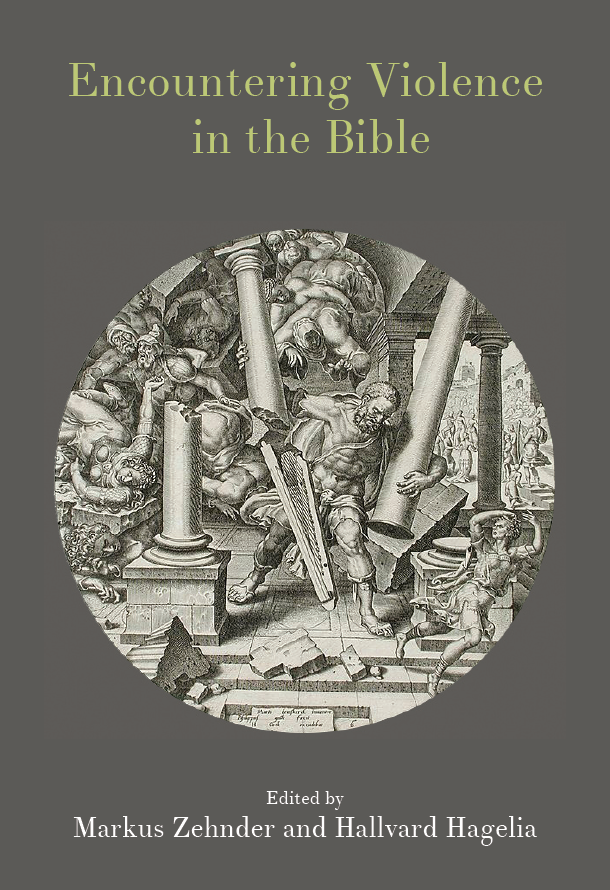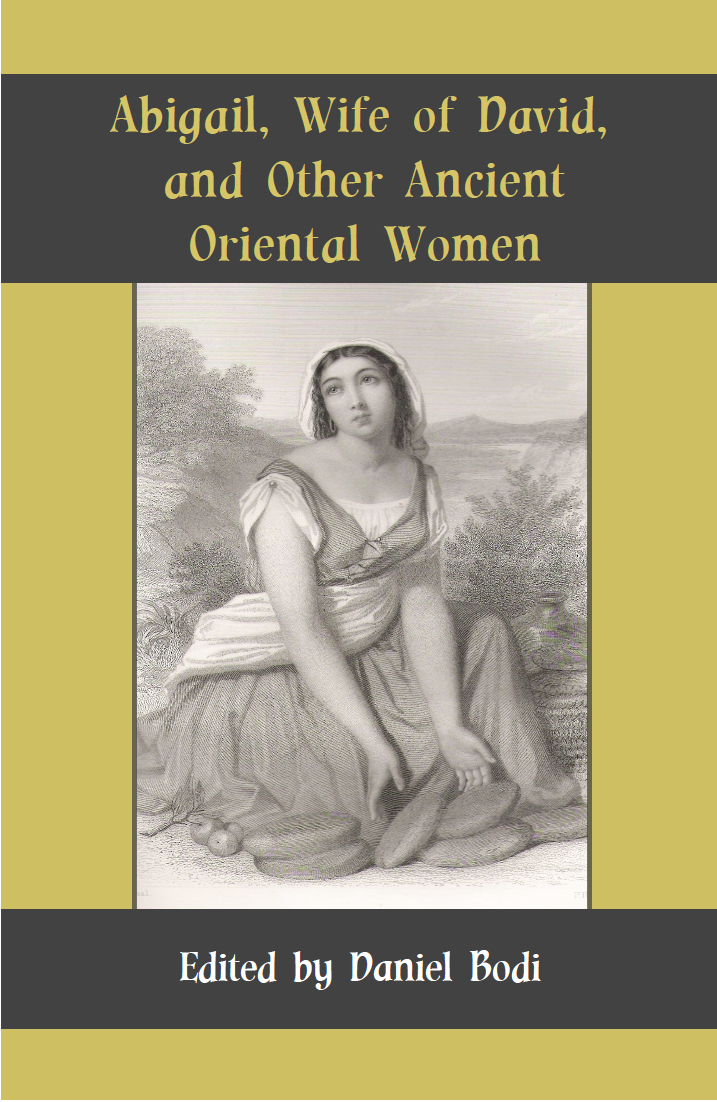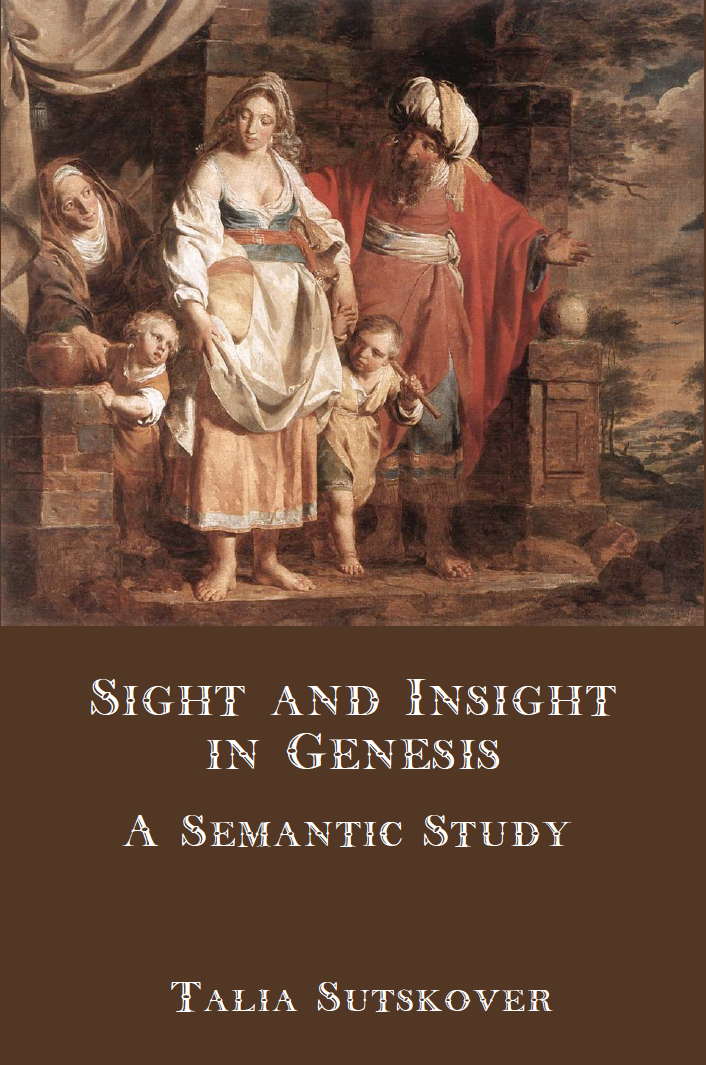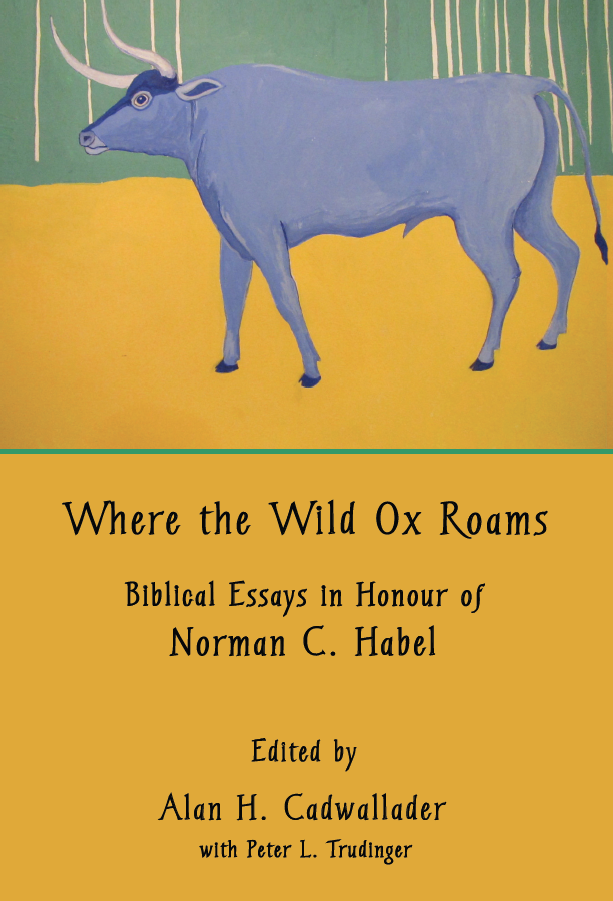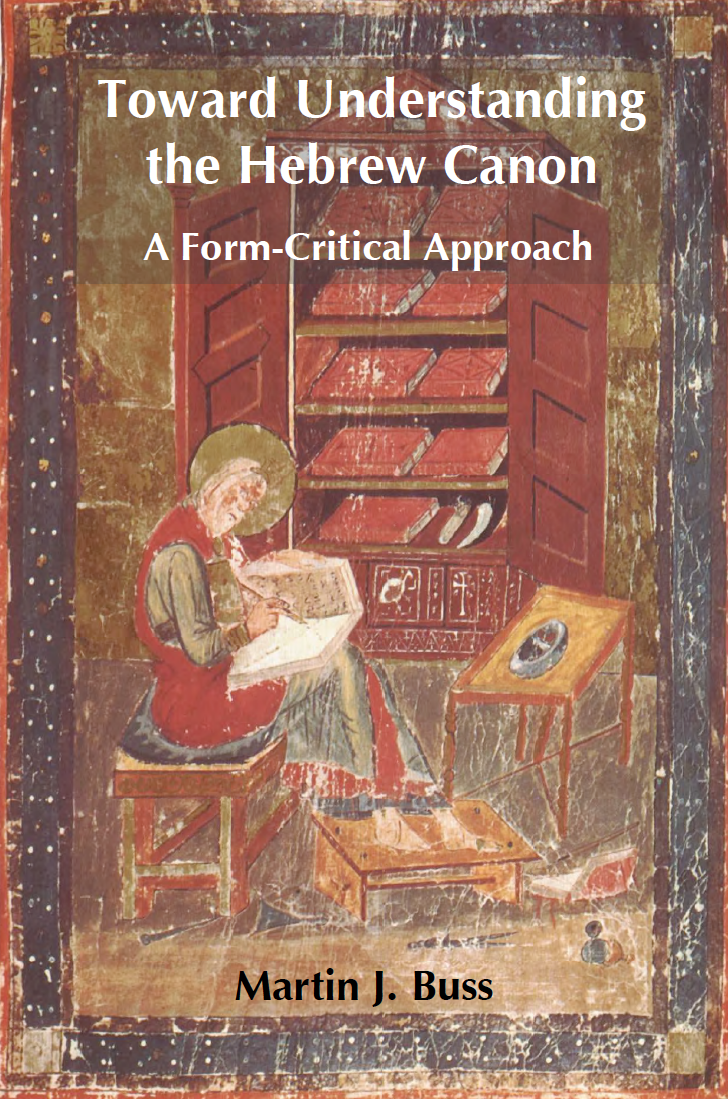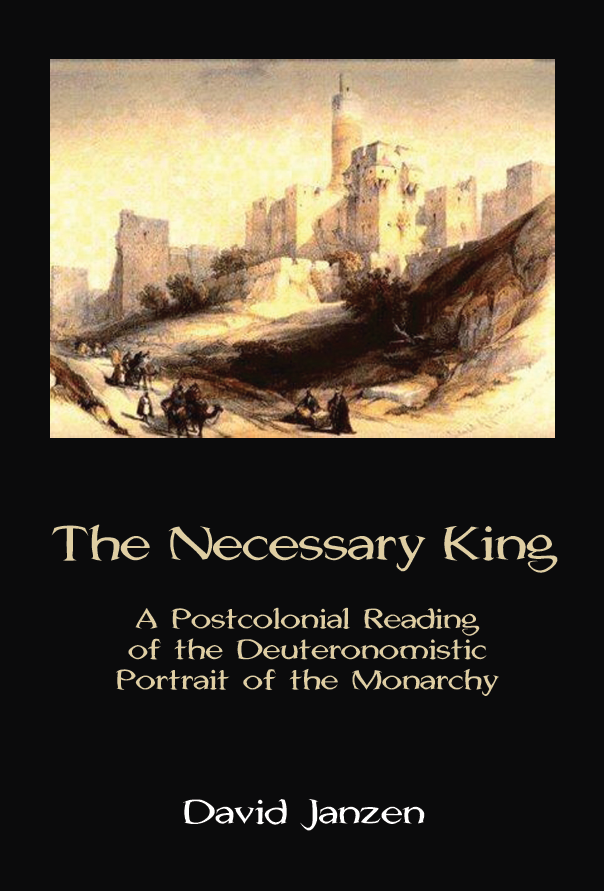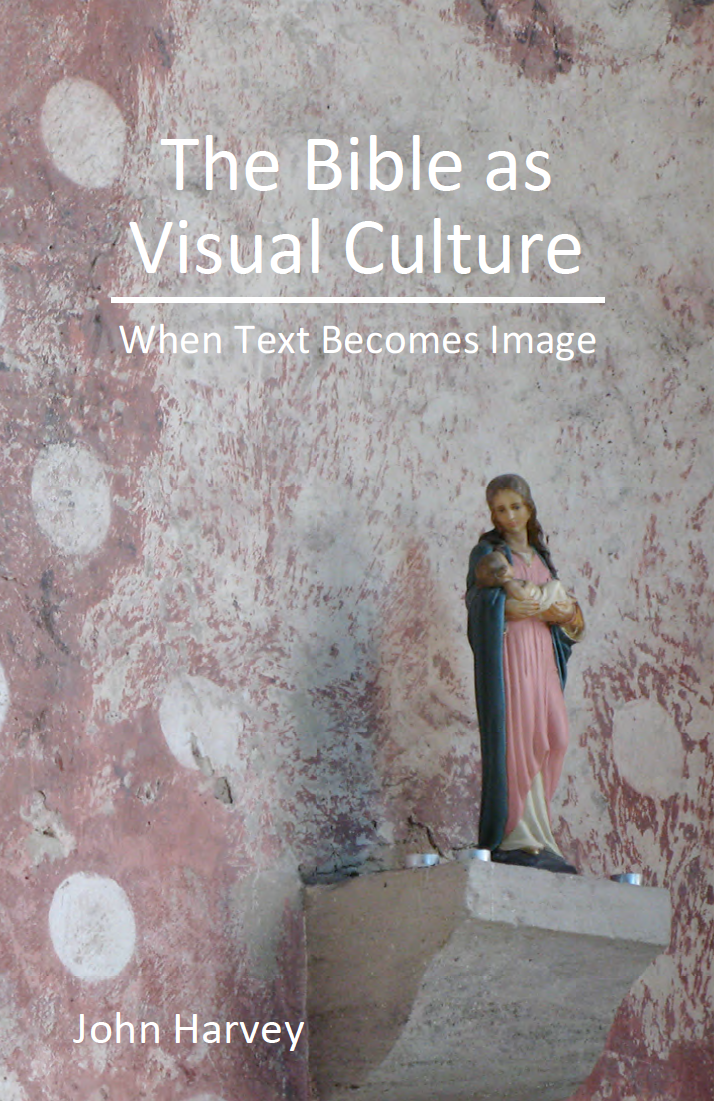Moses: The Man and the Myth in Music
Published: July 2014
£50.00
With this book, Leneman completes a trilogy on musical interpretations of biblical narratives. Her previous books were Love, Lust, and Lunacy: The Stories of Saul and David in Music (2010) and The Performed Bible: The Story of Ruth in Opera and Oratorio (2007).
Moses has often been thought of more as a myth than as a man. Later retellings of his story —particularly in operas and oratorios —demythologize him, portraying him and all the characters surrounding him on a more human scale. Moses the statue comes down from his pedestal and becomes a living man. For example, in the Bible the primary relationship of Moses is with God; secondarily it is with the people of Israel, rather than with individuals. In opera and the many oratorio settings the figure of Moses is enhanced by his representation as a man with many emotional ties —to Zipporah, Miriam or Aaron, or to all three.
Re-reading and re-telling biblical narratives through musical settings gives voice to often silent biblical characters, offering the reader and listener unexpected ways to hear and understand their story. In Moses: The Man and the Myth in Music, highlighting how Moses was richly imagined in oratorios and operas, Leneman discusses 16 operas and oratorios from the eighteenth to the twentieth century —including works by Handel, Rossini, Saint-Saëns, Massenet, Schoenberg and more obscure composers whose music has seldom or never been explored.
Through music, the listener can hear and also feel the suffering of the Israelites; the passion of Moses as leader, liberator, and even lover; the intensity of Miriam's vision and commitment; and the whole range of emotion experienced by every character that inhabits this story. The music and librettos not only fill in the spaces between the lines, but go beyond the margins of the biblical text to conjure up a multi-dimensional world.
Moses: The Man and the Myth in Music
£50.00
With this book, Leneman completes a trilogy on musical interpretations of biblical narratives. Her previous books were Love, Lust, and Lunacy: The Stories of Saul and David in Music (2010) and The Performed Bible: The Story of Ruth in Opera and Oratorio (2007).
Moses has often been thought of more as a myth than as a man. Later retellings of his story —particularly in operas and oratorios —demythologize him, portraying him and all the characters surrounding him on a more human scale. Moses the statue comes down from his pedestal and becomes a living man. For example, in the Bible the primary relationship of Moses is with God; secondarily it is with the people of Israel, rather than with individuals. In opera and the many oratorio settings the figure of Moses is enhanced by his representation as a man with many emotional ties —to Zipporah, Miriam or Aaron, or to all three.
Re-reading and re-telling biblical narratives through musical settings gives voice to often silent biblical characters, offering the reader and listener unexpected ways to hear and understand their story. In Moses: The Man and the Myth in Music, highlighting how Moses was richly imagined in oratorios and operas, Leneman discusses 16 operas and oratorios from the eighteenth to the twentieth century —including works by Handel, Rossini, Saint-Saëns, Massenet, Schoenberg and more obscure composers whose music has seldom or never been explored.
Through music, the listener can hear and also feel the suffering of the Israelites; the passion of Moses as leader, liberator, and even lover; the intensity of Miriam's vision and commitment; and the whole range of emotion experienced by every character that inhabits this story. The music and librettos not only fill in the spaces between the lines, but go beyond the margins of the biblical text to conjure up a multi-dimensional world.
On the Historicity of Jesus: Why We Might Have Reason for Doubt
Published: Jun 2014
Price range: £25.00 through £60.00
The assumption that Jesus existed as a historical person has occasionally been questioned in the course of the last hundred years or so, but any doubts that have been raised have usually been put to rest in favor of imagining a blend of the historical, the mythical and the theological in the surviving records of Jesus.
Carrier re-examines the whole question and finds compelling reasons to suspect the more daring assumption is correct. He lays out extensive research on the evidence for Jesus and the origins of Christianity and poses the key questions that must now be answered if the historicity of Jesus is to survive as a dominant paradigm.
Carrier contrasts the most credible reconstruction of a historical Jesus with the most credible theory of Christian origins if a historical Jesus did not exist. Such a theory would posit that the Jesus figure was originally conceived of as a celestial being known only through private revelations and hidden messages in scripture; then stories placing this being in earth history were crafted to communicate the claims of the gospel allegorically; such stories eventually came to be believed or promoted in the struggle for control of the Christian churches that survived the tribulations of the first century.
Carrier finds the latter theory more credible than has been previously imagined. He explains why it offers a better explanation for all the disparate evidence surviving from the first two centuries of the Christian era. He argues that we need a more careful and robust theory of cultural syncretism between Jewish theology and politics of the second-temple period and the most popular features of pagan religion and philosophy of the time. For anyone intent on defending a historical Jesus, this is the book to challenge.
On the Historicity of Jesus: Why We Might Have Reason for Doubt
Price range: £25.00 through £60.00
The assumption that Jesus existed as a historical person has occasionally been questioned in the course of the last hundred years or so, but any doubts that have been raised have usually been put to rest in favor of imagining a blend of the historical, the mythical and the theological in the surviving records of Jesus.
Carrier re-examines the whole question and finds compelling reasons to suspect the more daring assumption is correct. He lays out extensive research on the evidence for Jesus and the origins of Christianity and poses the key questions that must now be answered if the historicity of Jesus is to survive as a dominant paradigm.
Carrier contrasts the most credible reconstruction of a historical Jesus with the most credible theory of Christian origins if a historical Jesus did not exist. Such a theory would posit that the Jesus figure was originally conceived of as a celestial being known only through private revelations and hidden messages in scripture; then stories placing this being in earth history were crafted to communicate the claims of the gospel allegorically; such stories eventually came to be believed or promoted in the struggle for control of the Christian churches that survived the tribulations of the first century.
Carrier finds the latter theory more credible than has been previously imagined. He explains why it offers a better explanation for all the disparate evidence surviving from the first two centuries of the Christian era. He argues that we need a more careful and robust theory of cultural syncretism between Jewish theology and politics of the second-temple period and the most popular features of pagan religion and philosophy of the time. For anyone intent on defending a historical Jesus, this is the book to challenge.
The Bible, Justice and Public Theology
Published: May 2014
£60.00
Public theology is a developing field of discourse concerned to address matters of pressing public concern in theological perspective for the common good. Themes of ecology, poverty, human rights and especially justice feature prominently in its discourse. Although justice is also a prominent theme in the Bible, there is no single perspective on what constitutes justice in the Bible and no single view on how biblical perspectives on justice should contribute to contemporary discussion regarding the meaning and implementation of justice.
Informed and inspired by Christopher Marshall's landmark work on Compassionate Justice (Cascade Books, 2012) in dialogue with Jesus' parables of the Good Samaritan and the Prodigal Son, this collection of studies addresses various interrelations between the Bible, justice and public theology. Marshall himself proposes that certain parables of Jesus are paradigmatic for public theology, and some contributors respond to different dimensions of his treatment of the parables of the Good Samaritan and the Prodigal Son in terms of restorative justice.
Other contributors, by contrast, examine broader related concerns such as justice in biblical, theological and philosophical perspective, the hermeneutics of engagement for justice, the relation between feminist theology and restorative justice, biblical resources for public theology, and popular culture as both a conversation partner with and a medium for public theology.
The Bible, Justice and Public Theology
£60.00
Public theology is a developing field of discourse concerned to address matters of pressing public concern in theological perspective for the common good. Themes of ecology, poverty, human rights and especially justice feature prominently in its discourse. Although justice is also a prominent theme in the Bible, there is no single perspective on what constitutes justice in the Bible and no single view on how biblical perspectives on justice should contribute to contemporary discussion regarding the meaning and implementation of justice.
Informed and inspired by Christopher Marshall's landmark work on Compassionate Justice (Cascade Books, 2012) in dialogue with Jesus' parables of the Good Samaritan and the Prodigal Son, this collection of studies addresses various interrelations between the Bible, justice and public theology. Marshall himself proposes that certain parables of Jesus are paradigmatic for public theology, and some contributors respond to different dimensions of his treatment of the parables of the Good Samaritan and the Prodigal Son in terms of restorative justice.
Other contributors, by contrast, examine broader related concerns such as justice in biblical, theological and philosophical perspective, the hermeneutics of engagement for justice, the relation between feminist theology and restorative justice, biblical resources for public theology, and popular culture as both a conversation partner with and a medium for public theology.
Anatomical Idiom and Emotional Expression: A Comparison of the Hebrew Bible and the Septuagint
Published: May 2014
£75.00
The Hebrew Bible abounds in imagery linking feelings and emotions with various parts of the body. These vividly painted word pictures capture the imagination, and the reader can identify physically as well as emotionally with what is being expressed. But this colourful imagery, with its forthright and earthy language, is rather less apparent in modern English translations.
Such substitutions are not just common in English translations, but are also found in the first authorized translation of the Hebrew Bible, the Septuagint. Can the changes to body imagery found in English translations be explained as part of a process that began with the Greek text, which often gave a more muted picture than the Hebrew original?
This study explores these questions by making a detailed comparative analysis of anatomical idioms (body imagery) associated with the emotions of distress, fear, anger and gladness in the Hebrew Bible and the Septuagint. Differences are identified through literal translation into English from both Hebrew and Greek and the results are categorized, discussed and analysed, and detailed statistical information is presented. The data offer a rich resource for further research, and the analysis provides fascinating insights into the minds of the Greek translators and findings that are surprisingly complex.
Anatomical Idiom and Emotional Expression: A Comparison of the Hebrew Bible and the Septuagint
£75.00
The Hebrew Bible abounds in imagery linking feelings and emotions with various parts of the body. These vividly painted word pictures capture the imagination, and the reader can identify physically as well as emotionally with what is being expressed. But this colourful imagery, with its forthright and earthy language, is rather less apparent in modern English translations.
Such substitutions are not just common in English translations, but are also found in the first authorized translation of the Hebrew Bible, the Septuagint. Can the changes to body imagery found in English translations be explained as part of a process that began with the Greek text, which often gave a more muted picture than the Hebrew original?
This study explores these questions by making a detailed comparative analysis of anatomical idioms (body imagery) associated with the emotions of distress, fear, anger and gladness in the Hebrew Bible and the Septuagint. Differences are identified through literal translation into English from both Hebrew and Greek and the results are categorized, discussed and analysed, and detailed statistical information is presented. The data offer a rich resource for further research, and the analysis provides fascinating insights into the minds of the Greek translators and findings that are surprisingly complex.
Journal of Greco-Roman Christianity and Judaism 9 (2013)
Published: Apr 2014
£80.00
This is the ninth volume of the hard-copy edition of a journal that has been published online (www.jgrchj.net) since 2000. Volume 1 was for 2000, Volume 2 was for 2001 —2005, Volume 3 was for 2006, Volume 4 was for 2007, Volume 5 was for 2008, Volume 6 was for 2009, Volume 7 was for 2010, Volume 8 was for 2011-2012, and Volume 9 is for 2013. As they appear, the hardcopy editions will replace the online materials.
The scope of JGRChJ is the texts, language and cultures of the Greco-Roman world of early Christianity and Judaism. The papers published in JGRChJ are designed to pay special attention to the 'larger picture' of politics, culture, religion and language, engaging as well with modern theoretical approaches.
Journal of Greco-Roman Christianity and Judaism 9 (2013)
£80.00
This is the ninth volume of the hard-copy edition of a journal that has been published online (www.jgrchj.net) since 2000. Volume 1 was for 2000, Volume 2 was for 2001 —2005, Volume 3 was for 2006, Volume 4 was for 2007, Volume 5 was for 2008, Volume 6 was for 2009, Volume 7 was for 2010, Volume 8 was for 2011-2012, and Volume 9 is for 2013. As they appear, the hardcopy editions will replace the online materials.
The scope of JGRChJ is the texts, language and cultures of the Greco-Roman world of early Christianity and Judaism. The papers published in JGRChJ are designed to pay special attention to the 'larger picture' of politics, culture, religion and language, engaging as well with modern theoretical approaches.
Troubling Women and Land: Reading Biblical Texts in Aotearoa New Zealand
Published: Apr 2014
£60.00
What do women have to do with land? Biblical women such as Rahab, Achsah, and the daughters of Zelophehad have a great deal to do with Israel's land concerns, and their roles are indeed found troubling. And there are also questions to be asked of Miriam's role in the move from Egypt towards the 'promised' land; of Deborah, involved in a battle with a Canaanite commander; and of Huldah, whose troubling role in Josiah's reform is exposed in a queer-critical reading.
Reading such land-focused narratives from the context of Aotearoa New Zealand brings to the surface disturbing connections with that country's own quite particular experience of colonialism. Such findings call for feminist postcolonial scrutiny. Here, in response, the critical scope is widened by reading these texts contrapuntally with others concerning New Zealand's colonial and postcolonial experiences, both past and present.
Troubling Women and Land has a personal edge, with the author's voice frequently intruding, without apology, sometimes even holding imaginary conversations with characters and scholars, complementing the use of more traditional critical approaches. What underlies the book is a conviction that reading biblical texts matters in the politics of today's world.
Troubling Women and Land: Reading Biblical Texts in Aotearoa New Zealand
£60.00
What do women have to do with land? Biblical women such as Rahab, Achsah, and the daughters of Zelophehad have a great deal to do with Israel's land concerns, and their roles are indeed found troubling. And there are also questions to be asked of Miriam's role in the move from Egypt towards the 'promised' land; of Deborah, involved in a battle with a Canaanite commander; and of Huldah, whose troubling role in Josiah's reform is exposed in a queer-critical reading.
Reading such land-focused narratives from the context of Aotearoa New Zealand brings to the surface disturbing connections with that country's own quite particular experience of colonialism. Such findings call for feminist postcolonial scrutiny. Here, in response, the critical scope is widened by reading these texts contrapuntally with others concerning New Zealand's colonial and postcolonial experiences, both past and present.
Troubling Women and Land has a personal edge, with the author's voice frequently intruding, without apology, sometimes even holding imaginary conversations with characters and scholars, complementing the use of more traditional critical approaches. What underlies the book is a conviction that reading biblical texts matters in the politics of today's world.
Poverty, Wealth, and Empire: Jesus and Postcolonial Criticism
Published: Mar 2014
£45.00
Poverty, Wealth, and Empire presents an antidote to the liberal Jesuses that are constantly being constructed by theologians and historians in universities and seminaries in the West. Sandford's programme is to pay attention to those texts where Jesus appears hostile to his audiences, or even invokes the idea of divine judgment and violence against certain groups. Drawing on a variety of texts in the synoptic gospels, Sandford finds violent denouncements of the rich and those who neglect the needy to be a consistent theme in Jesus' teaching.
Rather than deploying biblical texts to support an anti-imperial or liberationist agenda, Sandford foregrounds troubling and problematic texts. Among them are wisdom sayings that justify poverty, texts that denigrate particular ethnic groups, and the ideology inherent in Jesus' teachings about the 'the Kingdom of God'. On such a basis Sandford is able to call into question the effectiveness of mainline Christian scholarly interpretations of Jesus in dealing with the most profound ethical problems of our time: poverty, domination and violence.
Always alert to the assumptions and prejudices of much Western New Testament scholarship, Sandford draws attention to its intellectual contradictions, and, furthermore, to the way in which this scholarship has sometimes served to undergird and justify systems of oppression —in particular by its demonstrable dodging of the issue of material poverty and its causes. Building on recent debates in postcolonial biblical criticism, Sandford offers a decidedly 'illiberal' reading of Jesus' sayings on divine judgment, focusing on the paradoxical idea of a 'nonviolent' Jesus who nevertheless pronounces divine violence upon the rich.
Poverty, Wealth, and Empire: Jesus and Postcolonial Criticism
£45.00
Poverty, Wealth, and Empire presents an antidote to the liberal Jesuses that are constantly being constructed by theologians and historians in universities and seminaries in the West. Sandford's programme is to pay attention to those texts where Jesus appears hostile to his audiences, or even invokes the idea of divine judgment and violence against certain groups. Drawing on a variety of texts in the synoptic gospels, Sandford finds violent denouncements of the rich and those who neglect the needy to be a consistent theme in Jesus' teaching.
Rather than deploying biblical texts to support an anti-imperial or liberationist agenda, Sandford foregrounds troubling and problematic texts. Among them are wisdom sayings that justify poverty, texts that denigrate particular ethnic groups, and the ideology inherent in Jesus' teachings about the 'the Kingdom of God'. On such a basis Sandford is able to call into question the effectiveness of mainline Christian scholarly interpretations of Jesus in dealing with the most profound ethical problems of our time: poverty, domination and violence.
Always alert to the assumptions and prejudices of much Western New Testament scholarship, Sandford draws attention to its intellectual contradictions, and, furthermore, to the way in which this scholarship has sometimes served to undergird and justify systems of oppression —in particular by its demonstrable dodging of the issue of material poverty and its causes. Building on recent debates in postcolonial biblical criticism, Sandford offers a decidedly 'illiberal' reading of Jesus' sayings on divine judgment, focusing on the paradoxical idea of a 'nonviolent' Jesus who nevertheless pronounces divine violence upon the rich.
Reforging the Bible: More Biblical Stories and Their Literary Reception
Published: Jan 2014
£55.00
Reforging the Bible continues the programme Anthony Swindell began in his earlier book, Reworking the Bible: The Literary Reception-History of Fourteen Biblical Stories (Sheffield Phoenix Press, 2010). It is a study of the reception in literature of over a dozen biblical stories, giving particular attention to rewritings that make radical changes to the original text. The reworkings are analysed using a morphology based on that of Gérard Genette in his study, Palimpsests. A new emphasis in this volume is on spatiality as a topic in rewritten biblical narratives.
The stories explored in this volume include those of Adam and Eve, Melchizedek, Lot and his Family, Joseph, Ruth, King Saul, David and Bathsheba, Tobit, the Virgin Mary, the Wedding at Cana, the Good Samaritan, Doubting Thomas, and the Second Coming. The literary reworkings discussed include the Old English Genesis A and Genesis B, the medieval Cyprian Feasts, the sixteenth-century broadside ballad David and Berseba, and works by Geoffrey Chaucer, William Shakespeare, Charles Dickens, Izak Dinesen, Carol Ann Duffy, André Gide, Rudyard Kipling, D.H. Lawrence, Penelope Lively, Thomas Mann, Dorothy Sayers, Mark Twain, Fernando Vallejo, Sally Vickers and Voltaire.
Also included is a chapter on folkloric versions of biblical stories as intermediaries in its literary reception. As well as providing the general reader with fascinating insights into the literary reception of the Bible, this work offers scholars an overview of a range of extraordinary reworkings which offer promising avenues for future research.
Reforging the Bible: More Biblical Stories and Their Literary Reception
£55.00
Reforging the Bible continues the programme Anthony Swindell began in his earlier book, Reworking the Bible: The Literary Reception-History of Fourteen Biblical Stories (Sheffield Phoenix Press, 2010). It is a study of the reception in literature of over a dozen biblical stories, giving particular attention to rewritings that make radical changes to the original text. The reworkings are analysed using a morphology based on that of Gérard Genette in his study, Palimpsests. A new emphasis in this volume is on spatiality as a topic in rewritten biblical narratives.
The stories explored in this volume include those of Adam and Eve, Melchizedek, Lot and his Family, Joseph, Ruth, King Saul, David and Bathsheba, Tobit, the Virgin Mary, the Wedding at Cana, the Good Samaritan, Doubting Thomas, and the Second Coming. The literary reworkings discussed include the Old English Genesis A and Genesis B, the medieval Cyprian Feasts, the sixteenth-century broadside ballad David and Berseba, and works by Geoffrey Chaucer, William Shakespeare, Charles Dickens, Izak Dinesen, Carol Ann Duffy, André Gide, Rudyard Kipling, D.H. Lawrence, Penelope Lively, Thomas Mann, Dorothy Sayers, Mark Twain, Fernando Vallejo, Sally Vickers and Voltaire.
Also included is a chapter on folkloric versions of biblical stories as intermediaries in its literary reception. As well as providing the general reader with fascinating insights into the literary reception of the Bible, this work offers scholars an overview of a range of extraordinary reworkings which offer promising avenues for future research.
‘Say You Are My Sister’: Danger, Seduction and the Foreign in Biblical Literature and Beyond
Published: Oct 2013
£50.00
Throughout biblical and Jewish literature we encounter a repeated story of a Hebrew or Jewish character who becomes involved in a dangerous erotic relationship. The sexual tension in these tales articulates the ambivalence between the national identities of the character and of the foreign other.
The first exemplification of the topos occurs in Genesis, where the matriarchs Sarah and Rebekah are handed over (or almost so) by their husbands to a foreign king. The other biblical cases are those of Joseph, who experiences the danger of seduction by Potiphar's wife, and Esther, who is taken by force into the harem of the Persian emperor.
In modern Hebrew literature, the theme reappears in the short story by the Nobel Prize winner S.Y. Agnon, 'The Lady and the Pedlar' from 1943, in which the Jewish pedlar is at risk of becoming the prey of a foreign cannibalistic woman, and in the novel Inta Omri (1994) by the poet-author Smadar Herzfeld, which describes a desperate love affair between an Israeli woman and a Palestinian man against the backdrop of the Intifada in the late 1980s.
Between the chapters devoted to these works lies a discussion of the film by the Swedish director Ingmar Bergman, The Touch (1971), the story of a Jewish archaeologist who falls in love with a Swedish woman, which Keshet reads as another instance of the same theme, but this time as a metaphor of Jewish —Christian relations from the perspective not of the Jewish character but of the foreign other.
‘Say You Are My Sister’: Danger, Seduction and the Foreign in Biblical Literature and Beyond
£50.00
Throughout biblical and Jewish literature we encounter a repeated story of a Hebrew or Jewish character who becomes involved in a dangerous erotic relationship. The sexual tension in these tales articulates the ambivalence between the national identities of the character and of the foreign other.
The first exemplification of the topos occurs in Genesis, where the matriarchs Sarah and Rebekah are handed over (or almost so) by their husbands to a foreign king. The other biblical cases are those of Joseph, who experiences the danger of seduction by Potiphar's wife, and Esther, who is taken by force into the harem of the Persian emperor.
In modern Hebrew literature, the theme reappears in the short story by the Nobel Prize winner S.Y. Agnon, 'The Lady and the Pedlar' from 1943, in which the Jewish pedlar is at risk of becoming the prey of a foreign cannibalistic woman, and in the novel Inta Omri (1994) by the poet-author Smadar Herzfeld, which describes a desperate love affair between an Israeli woman and a Palestinian man against the backdrop of the Intifada in the late 1980s.
Between the chapters devoted to these works lies a discussion of the film by the Swedish director Ingmar Bergman, The Touch (1971), the story of a Jewish archaeologist who falls in love with a Swedish woman, which Keshet reads as another instance of the same theme, but this time as a metaphor of Jewish —Christian relations from the perspective not of the Jewish character but of the foreign other.
The Recovery of the Ancient Hebrew Language: The Lexicographical Writings of D. Winton Thomas
Published: Oct 2013
£75.00
David Winton Thomas (1901 —1970) was Regius Professor of Hebrew in the University of Cambridge (1938 —1968) and one of the most distinguished British lexicographers of the Hebrew language. His special contribution was the identification of words in Biblical Hebrew that had lain undetected since ancient times, sometimes because they were homonyms of other, better-known words. He called his project 'The Recovery of the Ancient Hebrew Language', the title of his inaugural lecture at Cambridge in 1939, as well as of the present book.
In this volume John Day has gathered together all Winton Thomas's lexicographical articles (nearly 400 pages altogether) in a convenient format; hitherto these have been scattered around many different journals and books. In addition, he has prefaced them with a very substantial introduction of some 150 pages, in which he offers the first thorough and systematic evaluation of Winton Thomas's work.
Day concludes that there are definitely occasions where Thomas has made a positive and enduring contribution to Hebrew lexicography, and it is important that modern scholars do not overlook these conclusions. On the other hand, it becomes clear that Thomas was sometimes too prone to appeal to cognate Semitic languages (especially Arabic) in the search for new meanings of Hebrew words when this was unnecessary. In seeking to make a thorough appraisal of Thomas's proposals this volume offers a valuable contribution to the study of Biblical Hebrew lexicography.
The Recovery of the Ancient Hebrew Language: The Lexicographical Writings of D. Winton Thomas
£75.00
David Winton Thomas (1901 —1970) was Regius Professor of Hebrew in the University of Cambridge (1938 —1968) and one of the most distinguished British lexicographers of the Hebrew language. His special contribution was the identification of words in Biblical Hebrew that had lain undetected since ancient times, sometimes because they were homonyms of other, better-known words. He called his project 'The Recovery of the Ancient Hebrew Language', the title of his inaugural lecture at Cambridge in 1939, as well as of the present book.
In this volume John Day has gathered together all Winton Thomas's lexicographical articles (nearly 400 pages altogether) in a convenient format; hitherto these have been scattered around many different journals and books. In addition, he has prefaced them with a very substantial introduction of some 150 pages, in which he offers the first thorough and systematic evaluation of Winton Thomas's work.
Day concludes that there are definitely occasions where Thomas has made a positive and enduring contribution to Hebrew lexicography, and it is important that modern scholars do not overlook these conclusions. On the other hand, it becomes clear that Thomas was sometimes too prone to appeal to cognate Semitic languages (especially Arabic) in the search for new meanings of Hebrew words when this was unnecessary. In seeking to make a thorough appraisal of Thomas's proposals this volume offers a valuable contribution to the study of Biblical Hebrew lexicography.
Encountering Violence in the Bible
Published: Oct 2013
£60.00
Our world is full of violence, with repeated acts of terrorism and generally rising rates of violent criminal acts as the most obvious forms of the phenomenon in the Western world. It even reached the peaceful shores of Norway in the summer of 2011. This was one of the reasons why the first international meeting of the Norwegian Summer Academy for Biblical Studies was devoted to the topic 'Violence as an Ethical Challenge in the Bible'.
Eighteen biblical scholars from nine different countries (Joshua Berman, Lennart Bostršm, Friedmann Eissler, Torleif Elgvin, LarsOlov Eriksson, Karin Finsterbusch, Georg Fischer, Terence E. Fretheim, Hallvard Hagelia, Dana M. Harris, Robert L. Hubbard, Jr, ÌÉrstein Justnes, Gordon McConville, Kirsten Nielsen, Tommy Wasserman, Karl William Weyde, Peter Wick and Markus Zehnder) met on the beautiful premises of Ansgar Theological Seminary to discuss some of the most fundamental aspects of the topic. The papers presented at the conference are collected in the present volume, dealing mostly with the Hebrew Bible, but covering also the New Testament, Jewish literature from the Second Temple period and the Qur'an.
The contributions reflect a refreshing variety of scholarly and theological approaches. One of the fundamental questions addressed in several studies is how biblical texts justifying violence can be properly understood and used today. Other questions raised are how violent some of the often-criticized biblical passages really are and how violence can be overcome.
Encountering Violence in the Bible
£60.00
Our world is full of violence, with repeated acts of terrorism and generally rising rates of violent criminal acts as the most obvious forms of the phenomenon in the Western world. It even reached the peaceful shores of Norway in the summer of 2011. This was one of the reasons why the first international meeting of the Norwegian Summer Academy for Biblical Studies was devoted to the topic 'Violence as an Ethical Challenge in the Bible'.
Eighteen biblical scholars from nine different countries (Joshua Berman, Lennart Bostršm, Friedmann Eissler, Torleif Elgvin, LarsOlov Eriksson, Karin Finsterbusch, Georg Fischer, Terence E. Fretheim, Hallvard Hagelia, Dana M. Harris, Robert L. Hubbard, Jr, ÌÉrstein Justnes, Gordon McConville, Kirsten Nielsen, Tommy Wasserman, Karl William Weyde, Peter Wick and Markus Zehnder) met on the beautiful premises of Ansgar Theological Seminary to discuss some of the most fundamental aspects of the topic. The papers presented at the conference are collected in the present volume, dealing mostly with the Hebrew Bible, but covering also the New Testament, Jewish literature from the Second Temple period and the Qur'an.
The contributions reflect a refreshing variety of scholarly and theological approaches. One of the fundamental questions addressed in several studies is how biblical texts justifying violence can be properly understood and used today. Other questions raised are how violent some of the often-criticized biblical passages really are and how violence can be overcome.
Abigail, Wife of David, and Other Ancient Oriental Women
Published: Oct 2013
£50.00
This is the first book devoted to the biblical figure of Abigail, whose encounter with David is narrated in 1 Samuel 25. An interdisciplinary study, its seven papers combine biblical criticism, narratology, history of religions, Assyriology and the study of midrash.
One article (by Michaël Guichard) brings to light a major historical analogy from the Mari documents to the triangular relationship of Abigail, Nabal and David. The career of the princess Inib-sharri, first married to an old sheikh, and, after his sudden, mysterious death, to a younger princeling, provides a very apt analogy to that of Abigail.
Another article (by Daniel Bodi) compares David's way of seizing power to the pattern of seizing power in the ancient Near East: Zimri-Lim in Mari, Idrimi in Alalakh, and the 'Apiru in the Amarna texts serve as analogies to David.
The tale of David as an ambitious warlord taking power through marriage can be paralleled by the myth of Nergal and Ereshkigal; in its older Amarna version Nergal takes power through violence whereas in its Assyrian version his power is due to Ereshkigal's seduction and love. The Abigail story combines both aspects, beginning with violence and ending with marriage (Jean-Jacques Glassner).
Some rabbis saw Abigail as a seducer and a hellish type of woman. The final articles (by Bodi and Jean-Marie Husser) show that, while her behaviour might be ambiguous, she should not be branded a scarlet woman.
Abigail, Wife of David, and Other Ancient Oriental Women
£50.00
This is the first book devoted to the biblical figure of Abigail, whose encounter with David is narrated in 1 Samuel 25. An interdisciplinary study, its seven papers combine biblical criticism, narratology, history of religions, Assyriology and the study of midrash.
One article (by Michaël Guichard) brings to light a major historical analogy from the Mari documents to the triangular relationship of Abigail, Nabal and David. The career of the princess Inib-sharri, first married to an old sheikh, and, after his sudden, mysterious death, to a younger princeling, provides a very apt analogy to that of Abigail.
Another article (by Daniel Bodi) compares David's way of seizing power to the pattern of seizing power in the ancient Near East: Zimri-Lim in Mari, Idrimi in Alalakh, and the 'Apiru in the Amarna texts serve as analogies to David.
The tale of David as an ambitious warlord taking power through marriage can be paralleled by the myth of Nergal and Ereshkigal; in its older Amarna version Nergal takes power through violence whereas in its Assyrian version his power is due to Ereshkigal's seduction and love. The Abigail story combines both aspects, beginning with violence and ending with marriage (Jean-Jacques Glassner).
Some rabbis saw Abigail as a seducer and a hellish type of woman. The final articles (by Bodi and Jean-Marie Husser) show that, while her behaviour might be ambiguous, she should not be branded a scarlet woman.
Sight and Insight in Genesis: A Semantic Study
Published: Oct 2013
£60.00
Sight and Insight shows how prominent are terms from the semantic field of sight in the book of Genesis. They are constantly found in openings, at turning points, and as constituents in place-names and personal names. Because of their presence at strategic points in the plot of Genesis, words of sight enhance cohesion among the narratives of the book.
From the beginning of time, according to Genesis, there have been numerous instances of seeing on the part of both God and humans. But as Genesis progresses, God gradually becomes more hidden and his seeing gives place to human perception.
These observations are built upon a sound theoretical foundation, outlined in the opening chapter, which provides a clear definition of the concept of 'semantic field' and an explanation of related semantic terms such as 'frames' and 'prototypes'.
Subsequent chapters identify the words that can be assigned to the 'sight' field, examine the deployment of the sight field in individual narratives in Genesis, and study the sight field over larger sections of the book.
This is the sixth volume of the Amsterdam Studies in the Bible and Religion (ed. Athalya Brenner), a sub-series of the Bible in the Modern World and Hebrew Bible Monographs.
Sight and Insight in Genesis: A Semantic Study
£60.00
Sight and Insight shows how prominent are terms from the semantic field of sight in the book of Genesis. They are constantly found in openings, at turning points, and as constituents in place-names and personal names. Because of their presence at strategic points in the plot of Genesis, words of sight enhance cohesion among the narratives of the book.
From the beginning of time, according to Genesis, there have been numerous instances of seeing on the part of both God and humans. But as Genesis progresses, God gradually becomes more hidden and his seeing gives place to human perception.
These observations are built upon a sound theoretical foundation, outlined in the opening chapter, which provides a clear definition of the concept of 'semantic field' and an explanation of related semantic terms such as 'frames' and 'prototypes'.
Subsequent chapters identify the words that can be assigned to the 'sight' field, examine the deployment of the sight field in individual narratives in Genesis, and study the sight field over larger sections of the book.
This is the sixth volume of the Amsterdam Studies in the Bible and Religion (ed. Athalya Brenner), a sub-series of the Bible in the Modern World and Hebrew Bible Monographs.
Chorus in the Dark: The Voices of the Book of Lamentations
Published: Oct 2013
£60.00
Chorus in the Dark invites attention to the treaty negotiated by the voices of Lamentations. The issues of God's justice and human rights are at the centre of a forceful discussion embodied in the five poems of Lamentations. Difficult questions are subtly raised: How can God's justice be recognized and honoured in the midst of suffering? How can the human right to protest against mistreatment be respected? How can loss, grief, and shame be overcome? What future is there for the victims? How can these sensitive issues be negotiated without loss?
Zion is the first major speaker in Lamentations. Zion projects the voice of a woman crying by the grave. Her pain is intense, her loss is vast, her anger is uncontrollable. Zion is unable to see any future. God is indeed just in destroying her, but her surviving children do not deserve her fate.
The other major speaker is the man of Lamentations 3. He too speaks of the pain, grief, anger, and desire for vengeance of a victim bent under the yoke of affliction. Yet, like a Davidic king, he dares to claim covenant promises and hope that darkness will eventually turn to light.
Through both harmony and discord, and with a profound ambivalence toward the future, the separate voices of Lamentations resonate in a timbre that transcends the sum of its parts. The five poems, while having unique value individually, are meant to be read together as a living documentation of a moment of suspension, a great turning point in the history of Israel.
Chorus in the Dark: The Voices of the Book of Lamentations
£60.00
Chorus in the Dark invites attention to the treaty negotiated by the voices of Lamentations. The issues of God's justice and human rights are at the centre of a forceful discussion embodied in the five poems of Lamentations. Difficult questions are subtly raised: How can God's justice be recognized and honoured in the midst of suffering? How can the human right to protest against mistreatment be respected? How can loss, grief, and shame be overcome? What future is there for the victims? How can these sensitive issues be negotiated without loss?
Zion is the first major speaker in Lamentations. Zion projects the voice of a woman crying by the grave. Her pain is intense, her loss is vast, her anger is uncontrollable. Zion is unable to see any future. God is indeed just in destroying her, but her surviving children do not deserve her fate.
The other major speaker is the man of Lamentations 3. He too speaks of the pain, grief, anger, and desire for vengeance of a victim bent under the yoke of affliction. Yet, like a Davidic king, he dares to claim covenant promises and hope that darkness will eventually turn to light.
Through both harmony and discord, and with a profound ambivalence toward the future, the separate voices of Lamentations resonate in a timbre that transcends the sum of its parts. The five poems, while having unique value individually, are meant to be read together as a living documentation of a moment of suspension, a great turning point in the history of Israel.
Where the Wild Ox Roams: Biblical Essays in Honour of Norman C. Habel
Published: Sep 2013
£75.00
Norman C. Habel, the most eminent Hebrew Bible scholar of our time in Australia, has claimed a special place in biblical hermeneutics through his untiring work in the last two decades to foreground environmental issues as the critical lens through which the Bible must be read, judged and interpreted.
This centre of his most recent work has built on a long career of creative engagement with the biblical text, creativity that has witnessed not only major contributions in Hebrew Bible scholarship (most especially on Job and ideologies of 'the land') but in drama, poetry, liturgy, puppetry and music. Norm Habel has demonstrated the possibility of the academic being an activist and the activist being a scholar, all the while encouraging emerging and established scholarship to see further into the text and through the text to the justice demanding to be established in the world.
Seventeen friends have joined to honour the man and esteem, through this collection of essays, some of the illustrious facets of his prodigious output — on Job (Mark Brett, David Clines), ecological hermeneutics (Elaine Wainwright, Vicky Balabanski, Alan Cadwallader, Alice Sinnott, Dianne Bergant, Anne Elvey, Philip Davies), the arts (William Urbrock, Carol Newsom), and issues in personal encounters (Martin Buss, Marie Turner, Robert Crotty, Terence Fretheim, Ralph Klein, Gary Stansell).
Where the Wild Ox Roams: Biblical Essays in Honour of Norman C. Habel
£75.00
Norman C. Habel, the most eminent Hebrew Bible scholar of our time in Australia, has claimed a special place in biblical hermeneutics through his untiring work in the last two decades to foreground environmental issues as the critical lens through which the Bible must be read, judged and interpreted.
This centre of his most recent work has built on a long career of creative engagement with the biblical text, creativity that has witnessed not only major contributions in Hebrew Bible scholarship (most especially on Job and ideologies of 'the land') but in drama, poetry, liturgy, puppetry and music. Norm Habel has demonstrated the possibility of the academic being an activist and the activist being a scholar, all the while encouraging emerging and established scholarship to see further into the text and through the text to the justice demanding to be established in the world.
Seventeen friends have joined to honour the man and esteem, through this collection of essays, some of the illustrious facets of his prodigious output — on Job (Mark Brett, David Clines), ecological hermeneutics (Elaine Wainwright, Vicky Balabanski, Alan Cadwallader, Alice Sinnott, Dianne Bergant, Anne Elvey, Philip Davies), the arts (William Urbrock, Carol Newsom), and issues in personal encounters (Martin Buss, Marie Turner, Robert Crotty, Terence Fretheim, Ralph Klein, Gary Stansell).
Toward Understanding the Hebrew Canon: A Form-Critical Approach
Published: Sep 2013
£50.00
Toward Understanding the Hebrew Canon: A Form-Critical Approach explores in an original and reflective way the relations between the linguistic forms, ideas and life involvements of biblical genres. The various forms of the Hebrew Bible reflect and correspond to the richly diverse life experiences of the Hebrew people, which include varied legal, cultic and erotic interactions.
Divine speech is a prominent literary form in the Hebrew Bible, according to Buss's analysis. It has an emotive character, and is highly personal. Such speech establishes a series of Origin events that run from creation to the foundation of kingship; it both provides norms for life and struggles with human recalcitrance. Divine speech also provides evaluative assessments of present and envisaged situations, and it promises a truly good End. The humans to whom divine speech is directed are called on to acknowledge the divine reality, which they can do through self-transcendence, as a part of selfhood. In ethics, a receptive attitude acknowledges the unconditional worth of others, which is supported by Deity.
Human speech is usually also emotive, although on occasion it is concerned rather with dry historical actualities. It is intertwined with divine speech in narratives and prophecies.
In these fourteen essays (one of them previously unpublished) the renowned biblical scholar Martin Buss gathers an array of his work from many years, bringing to bear on the Hebrew Bible his extensive researches in cross-cultural data and in other disciplines such as philosophy and social psychology.
Toward Understanding the Hebrew Canon: A Form-Critical Approach
£50.00
Toward Understanding the Hebrew Canon: A Form-Critical Approach explores in an original and reflective way the relations between the linguistic forms, ideas and life involvements of biblical genres. The various forms of the Hebrew Bible reflect and correspond to the richly diverse life experiences of the Hebrew people, which include varied legal, cultic and erotic interactions.
Divine speech is a prominent literary form in the Hebrew Bible, according to Buss's analysis. It has an emotive character, and is highly personal. Such speech establishes a series of Origin events that run from creation to the foundation of kingship; it both provides norms for life and struggles with human recalcitrance. Divine speech also provides evaluative assessments of present and envisaged situations, and it promises a truly good End. The humans to whom divine speech is directed are called on to acknowledge the divine reality, which they can do through self-transcendence, as a part of selfhood. In ethics, a receptive attitude acknowledges the unconditional worth of others, which is supported by Deity.
Human speech is usually also emotive, although on occasion it is concerned rather with dry historical actualities. It is intertwined with divine speech in narratives and prophecies.
In these fourteen essays (one of them previously unpublished) the renowned biblical scholar Martin Buss gathers an array of his work from many years, bringing to bear on the Hebrew Bible his extensive researches in cross-cultural data and in other disciplines such as philosophy and social psychology.
The Necessary King: A Postcolonial Reading of the Deuteronomistic Portrait of the Monarchy
Published: Sep 2013
£80.00
The Necessary King explains why Israel needed a king according to the Deuteronomistic History, and why its exilic readers can expect no future except under Davidic rule. Given Israel's tendency to rebellion against its divine suzerain, the king is the necessary agent of God's colonization of Israel, making and keeping it a loyal subject.
The Deuteronomistic History with its pro-Davidic narrative has three prongs, each of which relies on an imitation of the imperial ideology of Judah's colonial masters. First, Dtr imitates the discourse of Neo-Assyrian treaties and Mesopotamian royal inscriptions, replacing the imperial suzerain with God.
Second, having established this client —suzerain relationship in Deuteronomy, Dtr then goes on to imitate imperial portrayals of the disloyal and wicked foreign enemies whom the Mesopotamian king colonizes. Israel is a foreign enemy in God's eyes, repetitively proving their disloyalty to their divine suzerain and so demonstrating the need for an Israelite king who will colonize them —for their own good.
Third, Dtr imitates the ideology of the Mesopotamian powers in its portrayal of the monarchy. Dtr presents the Davidides' relation to Judah/Israel just as the Mesopotamian colonial powers present their kings' relation to the foreign peoples they have conquered: their colonial rule is necessary, and actually benefits the peoples whom they colonize.
Disqualifying prophets, priests, and judges as potential leaders of Israel, and presenting the people as far too sinful to live without leadership, the Deuteronomistic History portrays the Davidic monarchy as a necessity.
The Necessary King: A Postcolonial Reading of the Deuteronomistic Portrait of the Monarchy
£80.00
The Necessary King explains why Israel needed a king according to the Deuteronomistic History, and why its exilic readers can expect no future except under Davidic rule. Given Israel's tendency to rebellion against its divine suzerain, the king is the necessary agent of God's colonization of Israel, making and keeping it a loyal subject.
The Deuteronomistic History with its pro-Davidic narrative has three prongs, each of which relies on an imitation of the imperial ideology of Judah's colonial masters. First, Dtr imitates the discourse of Neo-Assyrian treaties and Mesopotamian royal inscriptions, replacing the imperial suzerain with God.
Second, having established this client —suzerain relationship in Deuteronomy, Dtr then goes on to imitate imperial portrayals of the disloyal and wicked foreign enemies whom the Mesopotamian king colonizes. Israel is a foreign enemy in God's eyes, repetitively proving their disloyalty to their divine suzerain and so demonstrating the need for an Israelite king who will colonize them —for their own good.
Third, Dtr imitates the ideology of the Mesopotamian powers in its portrayal of the monarchy. Dtr presents the Davidides' relation to Judah/Israel just as the Mesopotamian colonial powers present their kings' relation to the foreign peoples they have conquered: their colonial rule is necessary, and actually benefits the peoples whom they colonize.
Disqualifying prophets, priests, and judges as potential leaders of Israel, and presenting the people as far too sinful to live without leadership, the Deuteronomistic History portrays the Davidic monarchy as a necessity.
The Bible as Visual Culture: When Text Becomes Image
Published: Aug 2013
£50.00
This is an interdisciplinary study of the Bible and visuality. It is the first to be written by a historian of visual culture (that is, aspects of culture mediated by visual images) rather than a biblical scholar, and unlike some previous studies, it makes equal partners of image and text. The Bible as Visual Culture also bridges a longstanding gulf between the interpretative traditions, languages, and reading conventions of the two disciplines.
The book's central question is: What happens when text becomes an image? In response, the study explores how biblical ideas are articulated in and through visual mediums, and examines ways in which visual culture actively shapes biblical and religious concepts. Using original research material, Harvey's approach develops a variety of new and adaptable hermeneutics to exegete artifacts.
The book applies theoretical and methodological approaches —native to fine art, art history, and visual cultural studies but new to biblical studies —to examine the significance of images for biblical exegesis and how images exposit the biblical text. John Harvey draws upon a breadth of fine art, craft, and ephemeral objects made, modified or adopted for worship, teaching, commemoration and propaganda, including painting, print, photography, sculpture, installations, kitsch and websites. These artifacts are studied chiefly in the context of the late-modern period in the West, from a Protestant Christian perspective for the most part.
The Bible as Visual Culture is directed to academics and students of biblical studies, theology, religious studies, ecclesiastical history, art history, visual culture and art practice. It provides an accessible introduction to the field, informing newcomers of existing scholarship and introducing new concepts and theories to those already in the field.
The Bible as Visual Culture: When Text Becomes Image
£50.00
This is an interdisciplinary study of the Bible and visuality. It is the first to be written by a historian of visual culture (that is, aspects of culture mediated by visual images) rather than a biblical scholar, and unlike some previous studies, it makes equal partners of image and text. The Bible as Visual Culture also bridges a longstanding gulf between the interpretative traditions, languages, and reading conventions of the two disciplines.
The book's central question is: What happens when text becomes an image? In response, the study explores how biblical ideas are articulated in and through visual mediums, and examines ways in which visual culture actively shapes biblical and religious concepts. Using original research material, Harvey's approach develops a variety of new and adaptable hermeneutics to exegete artifacts.
The book applies theoretical and methodological approaches —native to fine art, art history, and visual cultural studies but new to biblical studies —to examine the significance of images for biblical exegesis and how images exposit the biblical text. John Harvey draws upon a breadth of fine art, craft, and ephemeral objects made, modified or adopted for worship, teaching, commemoration and propaganda, including painting, print, photography, sculpture, installations, kitsch and websites. These artifacts are studied chiefly in the context of the late-modern period in the West, from a Protestant Christian perspective for the most part.
The Bible as Visual Culture is directed to academics and students of biblical studies, theology, religious studies, ecclesiastical history, art history, visual culture and art practice. It provides an accessible introduction to the field, informing newcomers of existing scholarship and introducing new concepts and theories to those already in the field.

